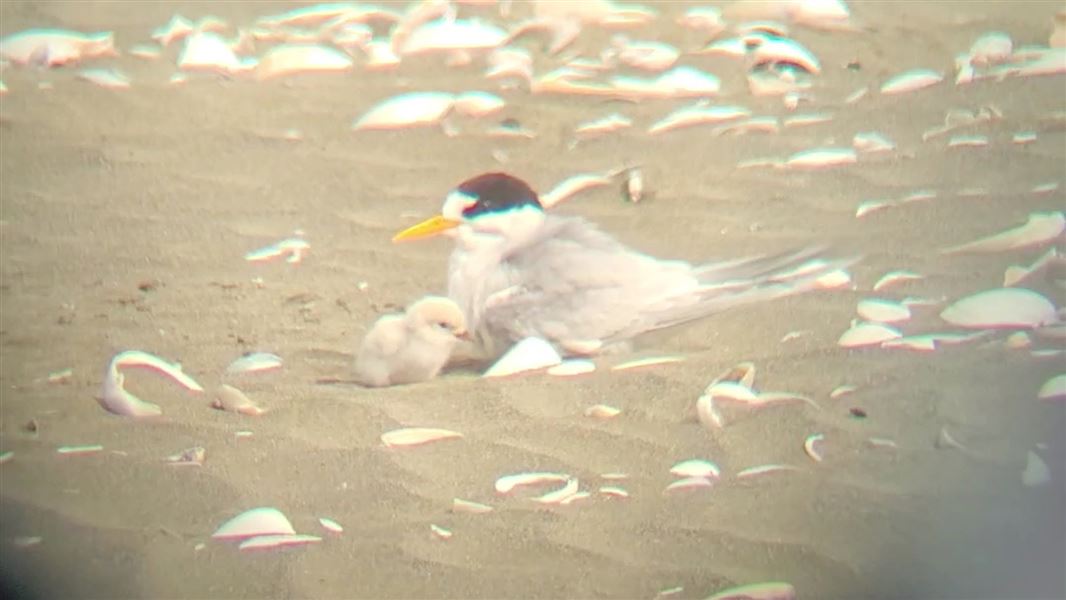Archived content: This media release was accurate on the date of publication.
Date: 16 November 2022
With fewer than 40 birds, the tara iti is nationally critical and has teetered on the brink of extinction since the 1970s.
DOC Biodiversity Ranger Shelley Ogle says: “Despite the very bad weather late last week the egg stayed safe and hatched over the weekend. We are hopeful he or she will continue to do well and fledge later in summer.
“Unfortunately, we lost two precious eggs at Waipū yesterday, a very frustrating situation we are looking into. At this stage we think it may have been predator birds attacking the nest. Eight chicks fledged from the wild in the last breeding season.”
Tara iti nest on shell and sand banks just above the high tide mark. This makes them vulnerable to rats, stoats and other predators, disturbance by people, 4WD vehicles and dogs. They are also at risk from stormy weather and very high tides.
“Unlike other managed species in Aotearoa, it is not currently feasible to transfer them to predator-free offshore islands as they require very specific ecosystems to nest and thrive. The team is currently trialling other methods of management such as captive rearing in partnership with Auckland Zoo, but this is not an option for every chick as the parents play such a vital role in teaching the young how to fish and where to go,” says Shelley.
A dedicated team of tara iti DOC rangers and volunteers has been busy since September trapping predators near nesting sites, developing safe shell patches, and preventing nesting birds from being disturbed by humans.
DOC, alongside iwi and key stakeholders, has been developing a new recovery strategy for tara iti over the past few years. This plan includes management of the vegetation, sand, and shell at site to improve the quality of tara iti habitats and identifying and managing new sites for the birds. This is married with ongoing predator control, artificial incubation of eggs, and seasonal monitoring by DOC rangers and volunteers.
The plan is informed by ongoing research into tara iti fertility, genetics, feeding, and improvements to data and field-based best practices.
Once widespread around the North Island and on the eastern South Island, tara iti now breed at only four nesting sites; Papakānui Spit, Pākiri Beach, Waipū and Mangawhai sandspits.
DOC works closely with Patuharakeke, Ngāti Wai, Ngāti Whātua o Kaipara, Ngāti Manuhiri, and Te Uri O Hau, The Shorebirds Trust, The NZ Fairy Tern Charitable Trust, About Tern, Birds NZ, and the Waipū Trapping Group to help protect tara iti.
Support for the tara iti season has also been provided by the New Zealand Defence Force, Pākiri Beach Holiday Park, Tara Iti Golf Course, iwi and landowners at Pākiri, Auckland Council, Armourguard and Auckland Zoo.
To help tara iti:
- Stay out of fenced areas and used designated walkways
- Avoid shorebird nests and chicks
- Keep dogs on leads
- Remove bait, fish and rubbish to deter predators
- Run vehicles below the tide mark
- If you are being chased, squawked at, or if a bird is on the ground pretending to be injured, you are too close to a nest
- If you find a nest do not touch it - the parent birds will be close by
Contact
For media enquiries contact:
Email: media@doc.govt.nz
